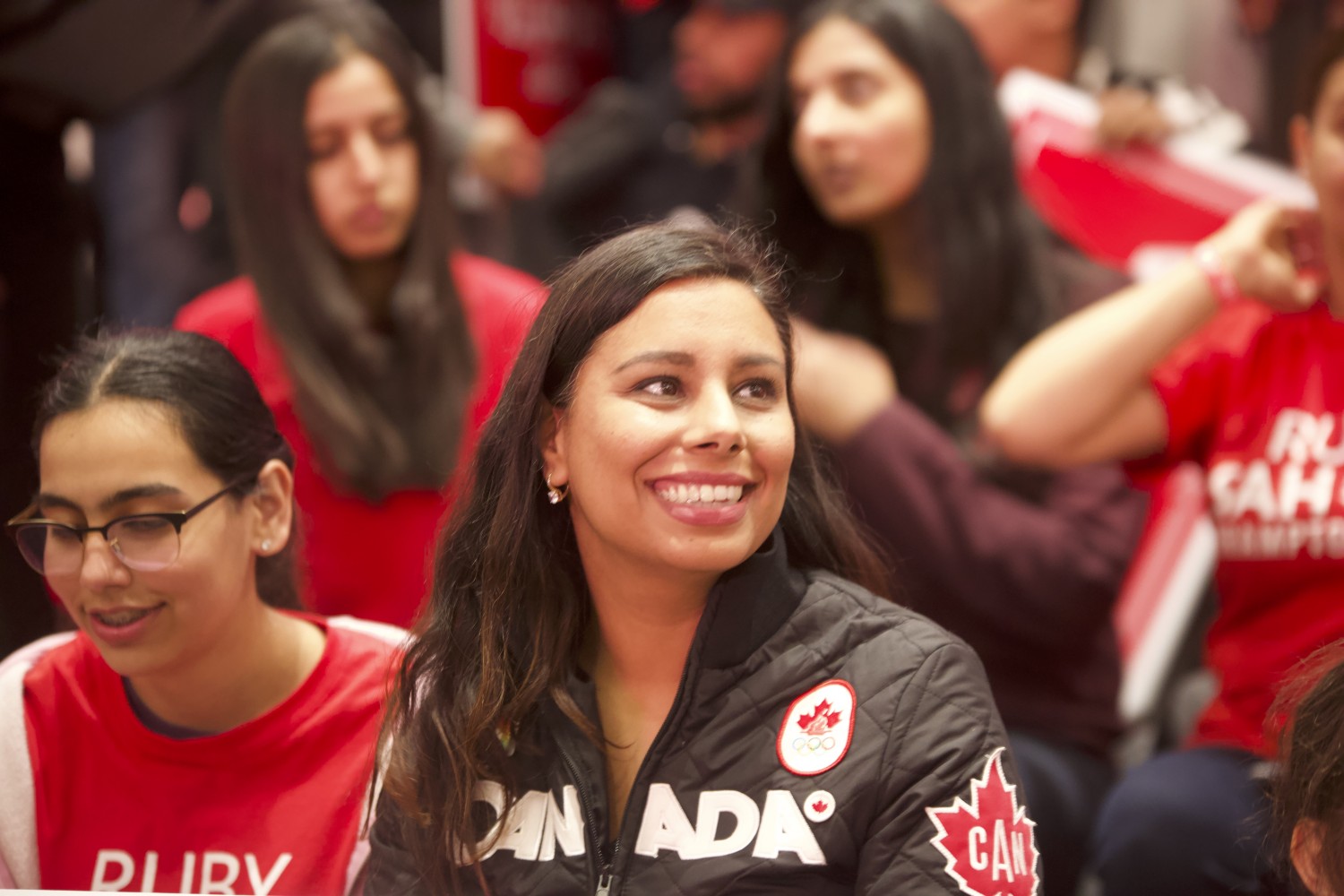
Ruby Sahota’s high hopes for change remain unrealized
When she arrived in Ottawa four years ago, Ruby Sahota was an MP on a mission.
The first half of her term was dominated by strong statements on local issues in her riding of Brampton North. She railed against problems with affordable housing, called out a lack of support for infrastructure and advocated for more mental-health funding. Change takes time, especially at the federal level, but Sahota’s statements in the House of Commons and work at the committee level over the course of 2016 and 2017 were good early steps.
Yet Brampton and the rest of Peel Region continue to deal with a housing affordability crisis and a social-housing system plagued with repair backlogs and extensive wait times. The government’s Investing in Canada infrastructure plan has left Brampton in the lurch, offering only minor investment for a city dealing with a multimillion-dollar gap.
So what happened?
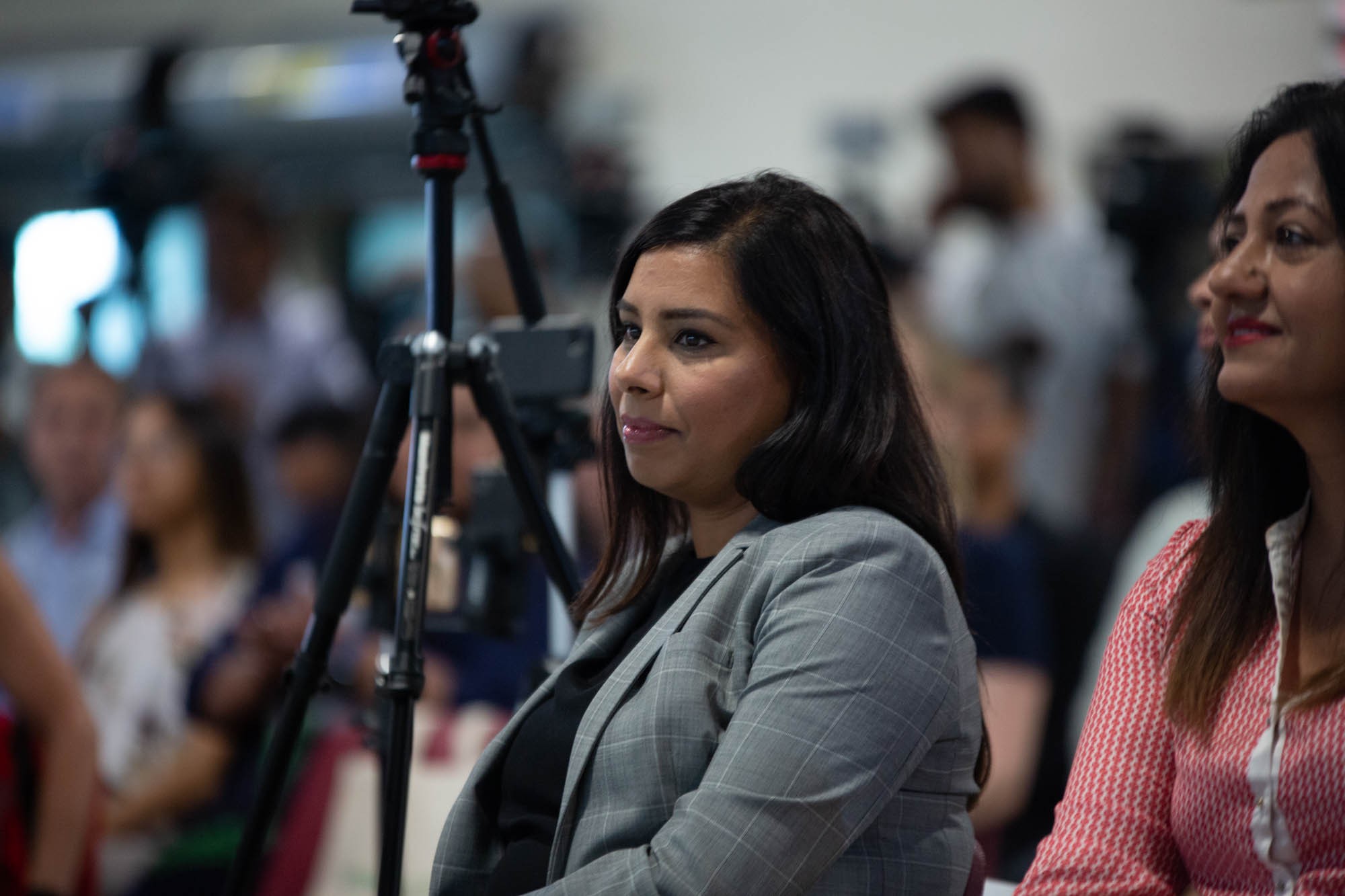
In 2015, it was clear the residents of Brampton were fed up with the Conservative government. In a massive flip-flop, the city’s five ridings were splashed red. Many of the Liberal candidates won their respective ridings with a strong majority. One of them was Ruby Sahota, a first-time candidate and lawyer who ousted Conservative incumbent Parm Gill with 48 percent of the vote.
In one of her first statements in the House of Commons, Sahota vowed to represent her constituents with the “utmost integrity, humility and hard work.” Further, she set the stage for two issues she would remain committed to raising throughout her time in Ottawa. She celebrated the government’s infrastructure commitment as “critical to the prosperity of cities across Canada, like my own.” She also pointed out the affordable housing crisis in Brampton and the fact that in 2015, the wait time for an affordable unit in the city was a “shocking” 10 years.
“This is unacceptable, and our government is invested in taking a leadership role to help build more housing units, refurbish existing ones, renew existing co-ops and provide greater funding support for municipalities,” she said in December 2015.
It was a sign of hope for housing providers in Brampton and the Region of Peel. After affordable housing was downloaded from the federal government to the province and eventually down to municipalities in the ’90s, they’ve mostly been left to fend for themselves. Sahota offered a strong voice of support for the cause, and when the Liberals’ National Housing Strategy was approved, the $13-billion investment again reinvigorated belief that Brampton and Peel would finally get their fair share of investment.
In a press conference ahead of the election this year, the Liberals celebrated their investment in the housing portfolio, which they say has created 41,800 new affordable units in Canada, repaired nearly 230,000 and provided 780,000 families or individuals with rental assistance or subsidies for social housing.
In Brampton, only one project is listed on the government’s website as getting assistance from the national strategy: a $15-million investment into the Brampton Bramalea Christian Fellowship to help build a six-storey, 90-unit affordable housing building.
Meanwhile, the wait list for affordable units in Peel continues to grow. In June 2018, there were 13,597 households in Brampton, Mississauga and Caledon on the list, with an average wait time of about six years. Since then, the number has grown to 13,726, even after the region moved 903 individuals from the wait list into housing.
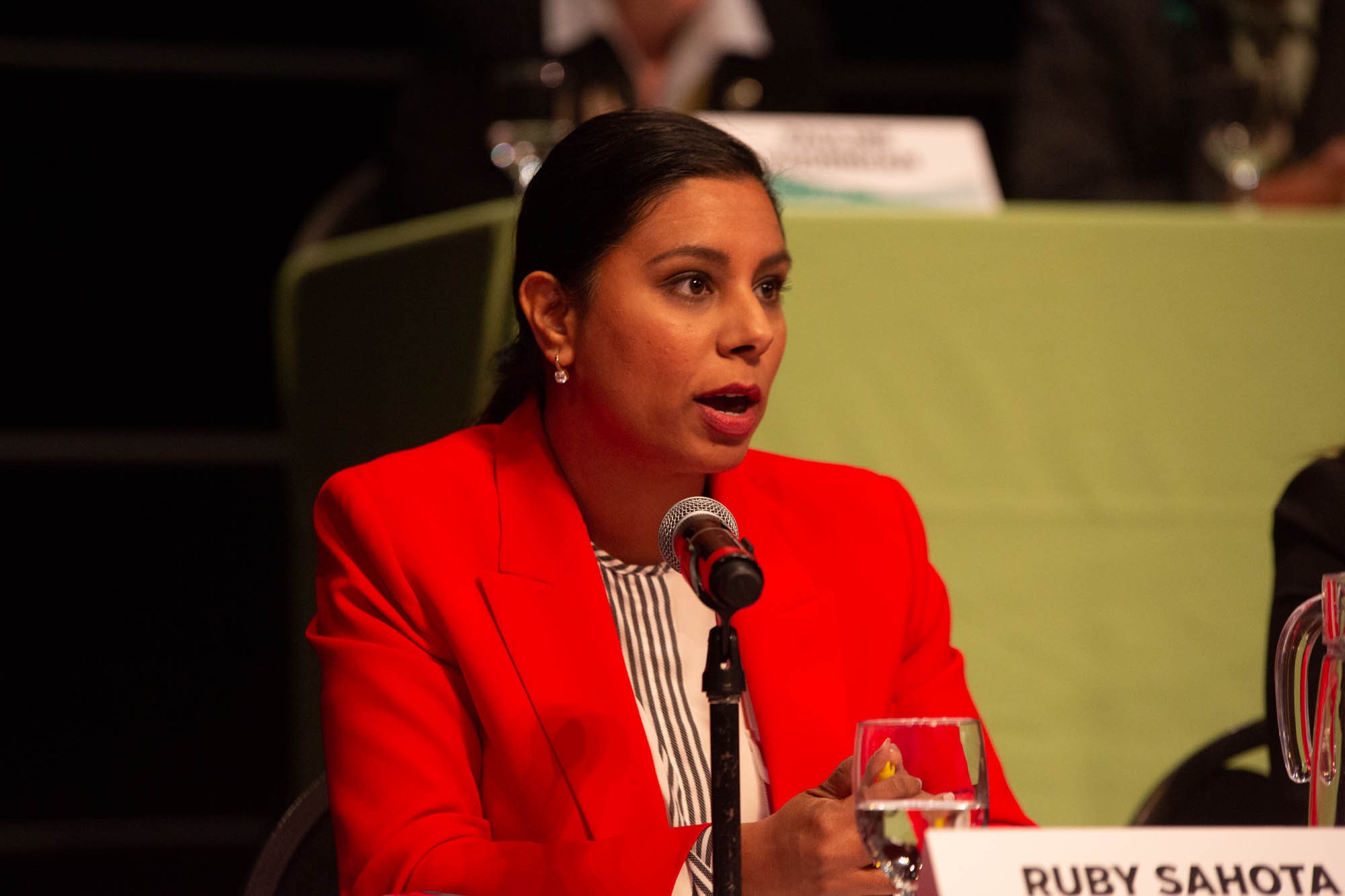
In similar fashion, Sahota also championed further investment into mental-health services both for youth and adults.
“Brampton’s community partners need our assistance today and tomorrow,” Sahota said in February 2017. The statement followed a town hall she’d hosted a month earlier in Brampton, where she said she hoped to find solutions to the problem alongside her constituents.
“Small steps have been taken with the opening of Brampton’s first youth shelter, but there is much work still to be done,” she said. “I encourage all members to become champions in their communities, because the issue affects our most vulnerable youth.”
The town hall on youth mental health was one of several hosted by Sahota throughout the first two years of her term. According to her expense reports, Sahota hosted 13 meetings where the purpose was either a town hall, “community event” or to “meet with constituents.” She spent approximately $5,700 on such meetings between her election in 2015 and March 2017. Sahota also travelled quite frequently between Ottawa and her Brampton riding over that time period, making the trip nearly 40 times — approximately every other week — at a cost of just under $60,000 for herself, dependents and staff members.
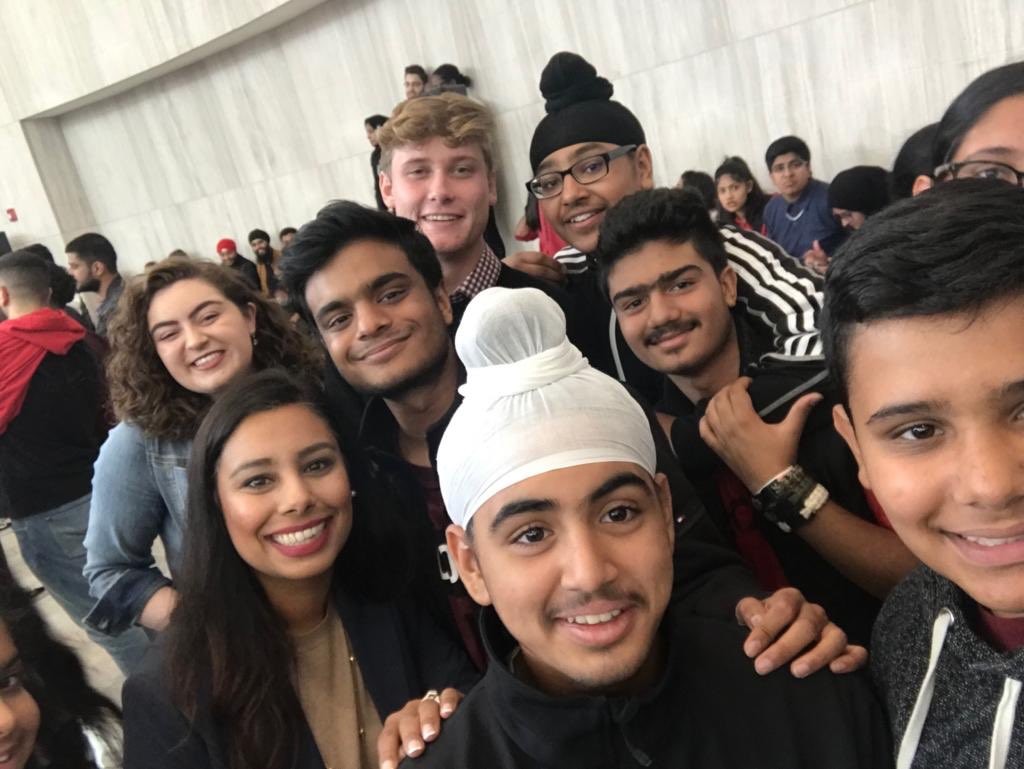
Ruby Sahota at a youth town hall in Mississauga in September
The dollars spent on travel for MPs is a necessary evil. For Sahota and her fellow Brampton MPs, their travel budgets are relatively small in comparison to MPs who must travel across the country to reach their ridings, instead of simply down Highway 401. However, these trips are still being made on the public’s dime, and making good use of their time while in the riding is essential. Sahota herself shared the benefits of strong engagement with her constituents ahead of the 2017 summer break.
“For me, summer means I get to better focus on the people of Brampton North by being in my Brampton office more often, by attending more community events and by hearing from the residents of Brampton North right at their doorsteps,” she said.
However, Sahota’s advocacy has yet to inspire serious action in Ottawa.
Sahota said in 2017 that “mental health has been underfunded for years. I know that our provinces understand the need for mental-illness funding, but they have not always had the means to fund that area.” She added that the Liberals’ budget for that year would provide more than $5 billion over 10 years toward mental health.
“We have been underserved in Brampton for a long time. We have a population of 600,000 but we have very few support workers in this area. Budget 2017 would give us the relief we need,” she said at the time.
Years later, workers feel no such relief. Talking to The Pointer in June of this year, CEO David Smith of the Peel-Dufferin branch of the Canadian Mental Health Association (CMHA) noted that a lack of investment into the region’s mental-health system is a constant worry for him and other service providers. “The whole mental health and addictions system in Peel is fragile,” he said at the time.
That same month, the federal government gave Brampton $75,000 through the Promoting Health Equity: Mental Health of Black Canadians Fund. The dollars went to Aspire for Higher Elite Basketball to help the group build capacity for more youth and create a mental-health education curriculum. It was a welcome investment but a pittance compared to the area’s need. In 2017, Peel Regional Police received more than 5,800 requests for help in mental-health situations, a 15 percent increase over the year before.
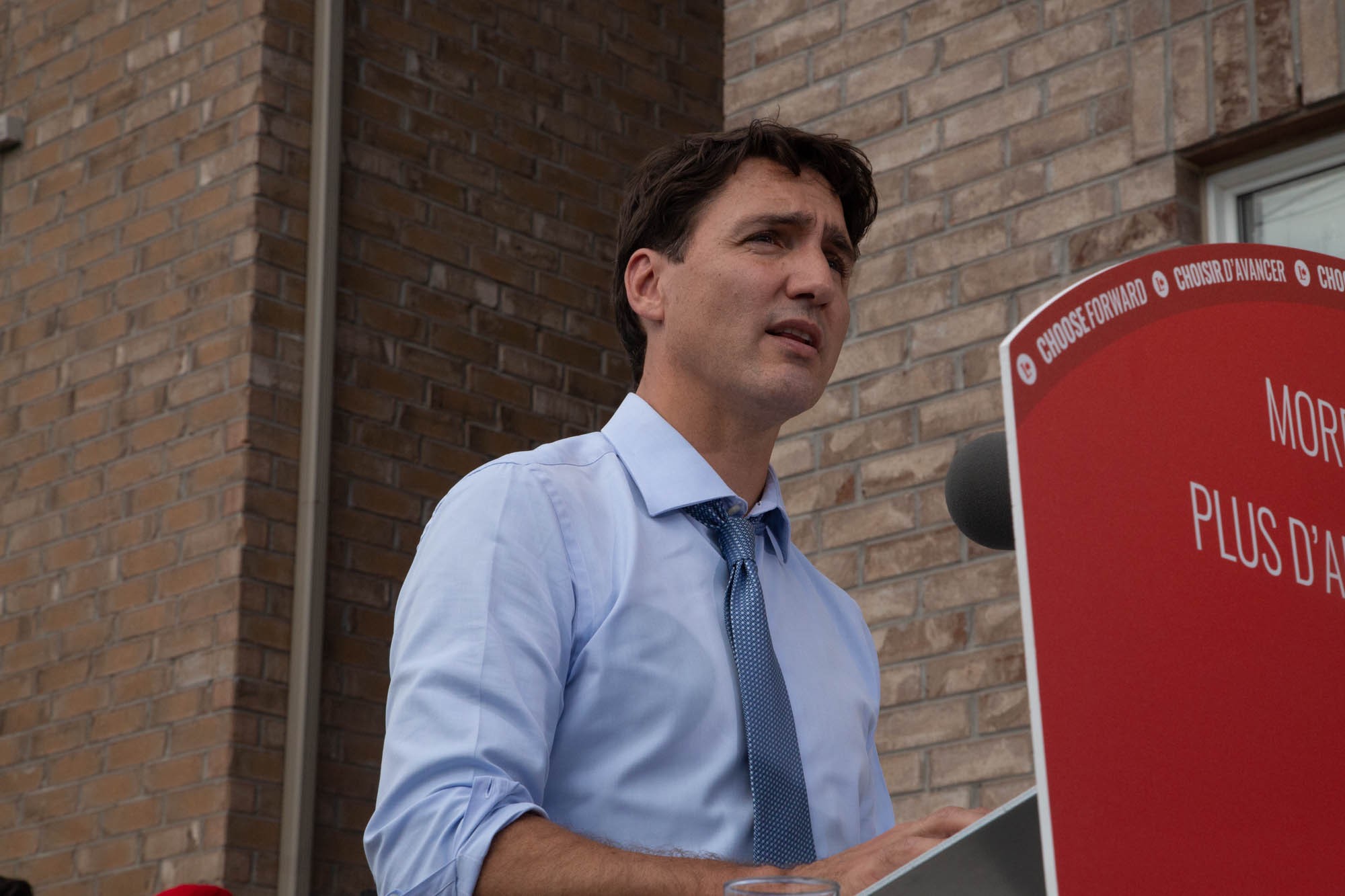
Ruby Sahota defended Liberal Leader Justin Trudeau in a time of scandal.
Over the course of her term, Sahota was consistently tasked with being a voice for the party in times of scandal. Sahota defended Liberal Leader Justin Trudeau after his controversial trip to India in early 2018, which Sahota attended. He was criticized in the media for wearing traditional Indian clothing that may have been a little over the top.
“The prime minister respected our culture and our traditions, including the clothing we value so dearly,” Sahota said in March 2018. “I am so happy that my child, my son, can see a prime minister today who respects his culture, his tradition and where he comes from.”
Sahota also came to the aid of defence minister Harjit Sajjan after he apologized for embellishing his role in a key operation in Afghanistan, Operation Medusa, during his time in the military.
“The minister has apologized, and we must move forward,” Sahota said. “I believe the minister has done a great service for his country where this operation is concerned.”
Her public statements during trying times suggest Sahota had earned the trust of Liberal Party leaders. A look at Sahota’s voting record suggests the same, as she not once voted against the party on key bills that were eventually passed into law, according to records compiled by openparliament.ca.
Over the course of 2018 and 2019, Sahota’s tone in Parliament began to change. Instead of listing the issues that still existed in her community, she began to praise her government’s efforts.
In April 2018, Sahota celebrated the “significant investment” being made in Brampton by the federal government, specifically citing the Riverwalk and public transit. The Riverwalk project received $1.5 million from the federal government to assist with the environmental assessment process.
She said much of the same almost a year later.
“The city of Brampton also saw a major investment in transit by our government. Over $32 million was invested in transit projects, like replacing and fixing buses and having storage facilities for these buses,” she said in January of this year.
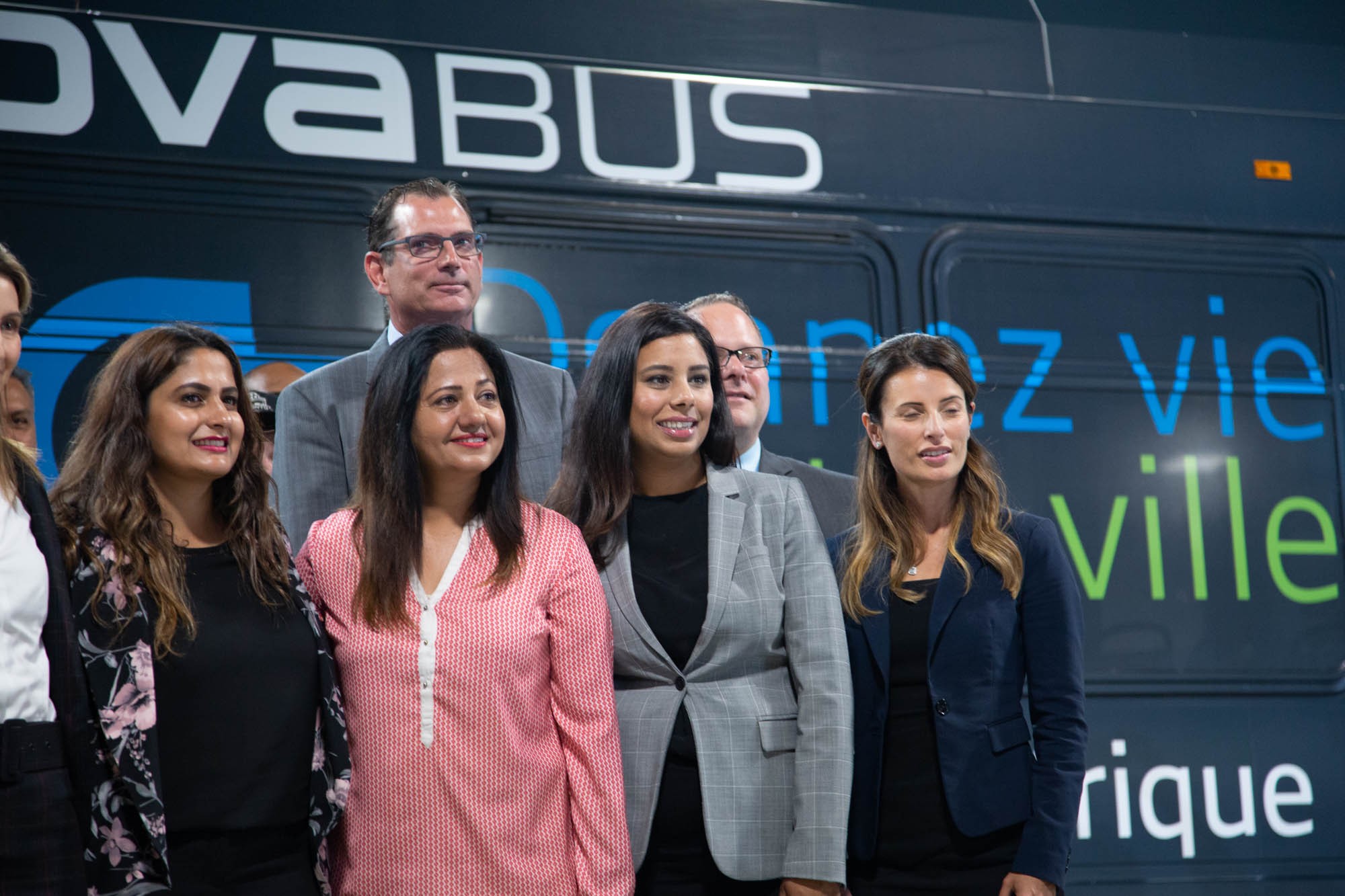
Ruby Sahota was at the Brampton Transit Sandalwood Facility in July for a federal announcement on greener transit.
A closer look at the numbers doesn’t paint such a rosy picture.
A key election plank for the Liberals in 2015 was an additional $60 billion of new funding over 10 years to help cities deal with crumbling infrastructure. That funding, added to the previous Stephen Harper government’s commitment of $128 billion, brought the total up to a mammoth $188 billion.
The city of Brampton has received approximately $42.4 million from the Investing in Canada Plan to support numerous small projects. The largest chunk of money, $12.4 million to assist with expanding the Sandalwood Transit Maintenance Facility, was received in 2017.
The cumulative funding is nowhere close to what Brampton would receive if the money was parceled out based on population; that would be about $972 million. The impact shows in Brampton’s 2019 budget. The document describes a $246-million infrastructure gap for unfunded projects. If ignored, the gap could grow as high as $743 million by 2027, according to city staff.
By contrast, Edmonton, the country’s fifth largest city, has received commitments of more than $1.9 billion from the federal Investing in Canada Plan. Thus residents in Brampton and Mississauga got a return on their tax dollars that is $1.75 billion less than taxpayers in Alberta’s capital, which has about 400,000 fewer residents than the two Peel Region cities combined.
The federal government did provide a small boost to infrastructure funds in this year’s budget, giving a one-time doubling of funds to cities from the gas tax. This meant an additional $41 million for the Region of Peel and $16.6 million specifically for Brampton for infrastructure projects. “This funding is a big deal for Brampton, and I am thrilled it was in our budget,” Sahota said in April.
Whether you consider her investment wins large or small, a look at Sahota’s expense reports and social-media feeds shows a representative doing her best to connect with voters.
As stated above, in the first 75 weeks of her term as MP for Brampton North, Sahota held 13 town halls, community events or meetings with constituents and stakeholders. In the latter 104 weeks, she held about 20 such meetings, according to her expense reports.
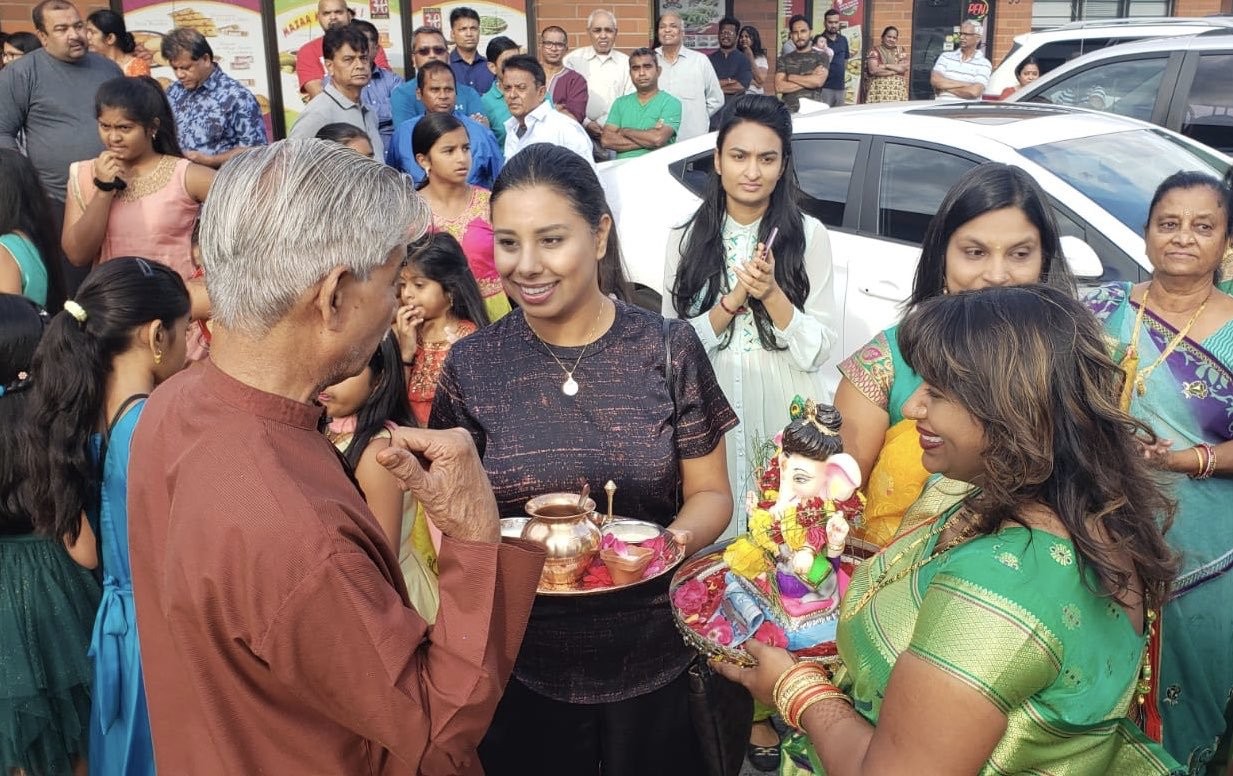
Ruby Sahota at Ganesh Chaturthi celebrations in Brampton in September
Based on her Twitter feed, Sahota is active in the Brampton community. She’s used the social-media platform to highlight meetings with youth, local firefighters and municipal politicians as well as provide statements on a range of current affairs, including climate change, cybersecurity, immigration and cuts proposed by Premier Doug Ford earlier this year. Sahota’s tweets also show her attending a number of community events, business openings and galas, though these tweets appear less frequently.
In total, Sahota stood to speak in the House of Commons 111 times during her four years in Ottawa. With 540 full days of sitting in the House over that time, that means she spoke about once a week. She mentioned her home city often, with Brampton coming up nearly half the time.
At the committee level, Sahota was much more active. According to Hansard records, Sahota spoke more than 1,500 times as a member of the standing committee on public safety and national security as well as the standing committee on procedure and house affairs, along with temporary roles on the standing committee on the status of women and the special committee on electoral reform.
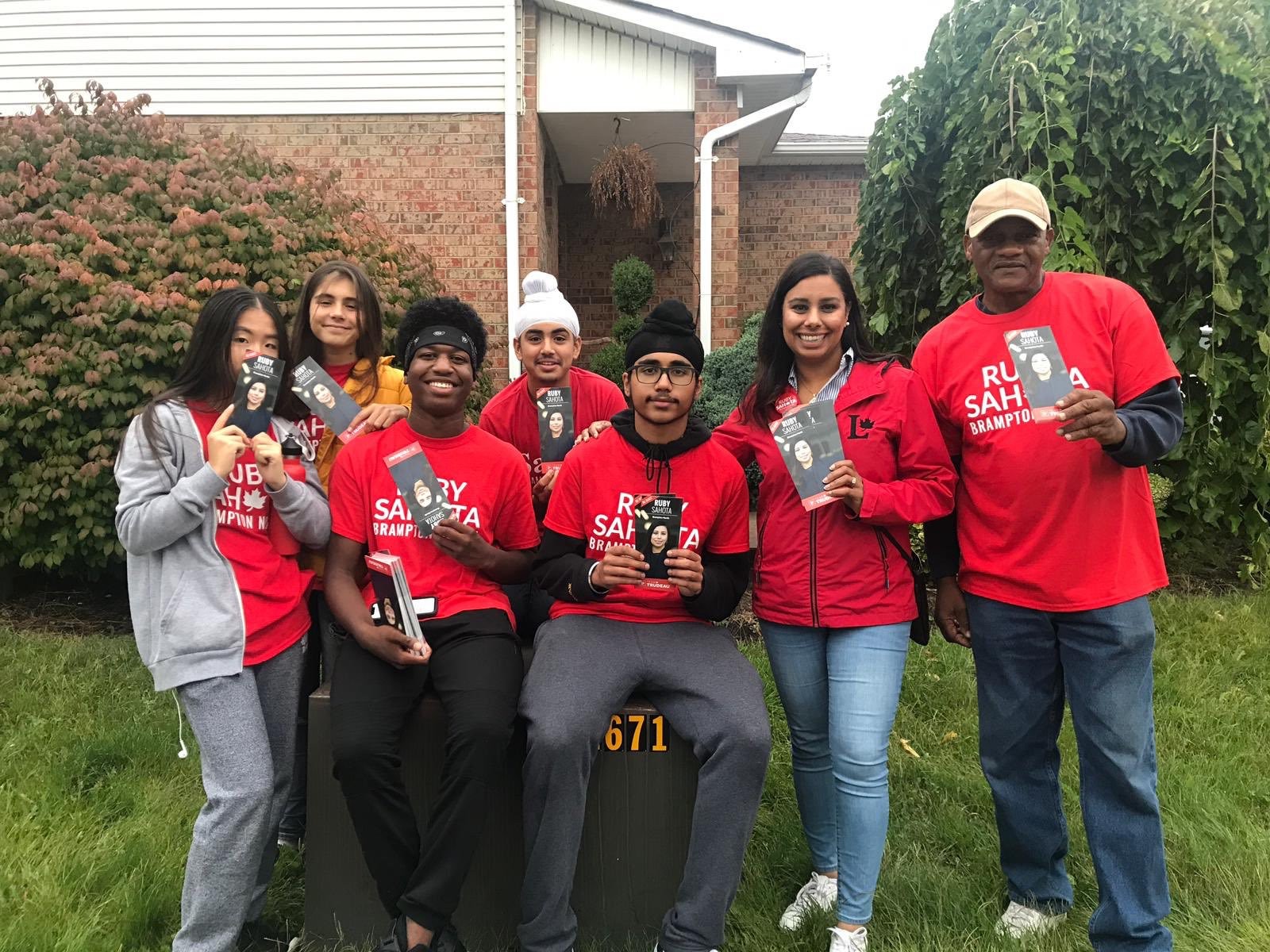
Ruby Sahota on the campaign trail with volunteers
If Sahota wishes to continue the groundwork she’s laid during her first term, she will first have to win the tight race currently unfolding in Brampton North.
Currently, data from polling aggregator 338Canada shows that Sahota holds a tight lead in the riding over her Conservative challenger Arpan Khanna, with the incumbent sitting at 37.6 percent of the vote and Khanna at 33 percent. NDP challenger Melissa Edwards is currently polling around 19 percent.
Email: [email protected]
Twitter: @JoeljWittnebel
Submit a correction about this story


